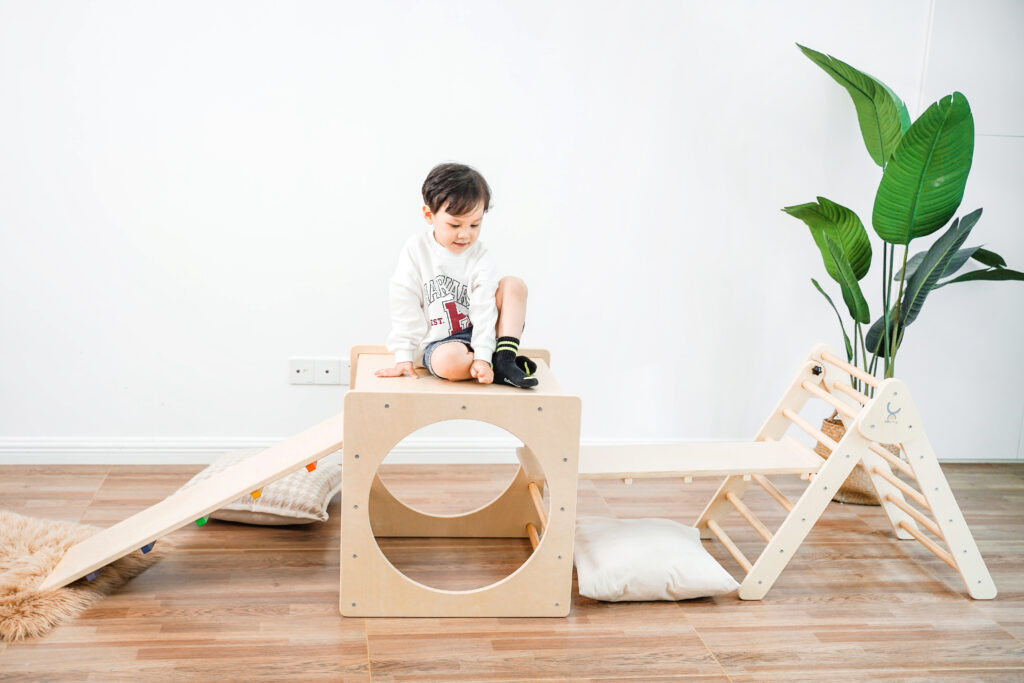The principles of Dr. Emmi Pikler’s approach to raising healthy babies: This approach is based on renowned Hungarian pediatrician Emmi Pikler’s research into gross motor development and emphasizes treating babies with respect by telling them what you are going to do before you do it, encouraging them to participate in their own care and supporting them to solve their own problems.
It is said that in Budapest, “Pikler babies” can be recognized even when they are older because they move with grace and freedom. Dr. Pikler believed this is because they were not sat up before they were ready to move into a sitting position on their own, were not walked by having their hands held but were allowed to learn to walk at their own pace, and were not strapped into swings and infant seats, but were allowed to move naturally and at will and freely and allowed to spontaneously follow their own in-born developmental time-table.
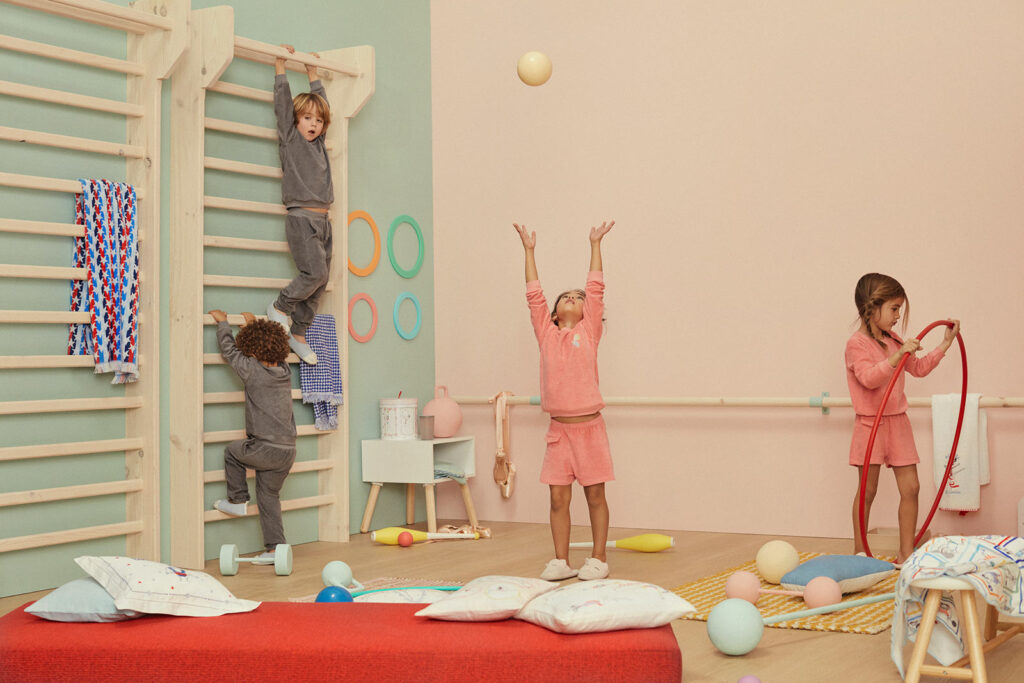
Basic Principles:
1. The value of self-initiated activity from the earliest age i.e. allowing plenty of time on the (baby-proofed) floor for uninterrupted exploration and play.
2. The value of building a trusting relationship with a consistent caregiver who is respectful of the child’s personality and needs. This involves sensitive observation of the child as well as slowing down and tuning in during the daily care giving routines of dressing, feeding, bathing and nappy changing and communicating what you are doing. Taking the time to observe our babies will teach us about them and their needs.
3. The value of sustaining each child in building self-awareness. This is done through encouraging active participation in whatever is going on – alone or in interaction – rather than simply perceiving the child as an object to be bathed and fed: “I’m putting on your sweater. Can you give me your hand?” Parents and caregivers can take advantage of the natural daily care-giving routines such as feeding, changing, dressing and bathing to slow down, tune in to and nurture our children.
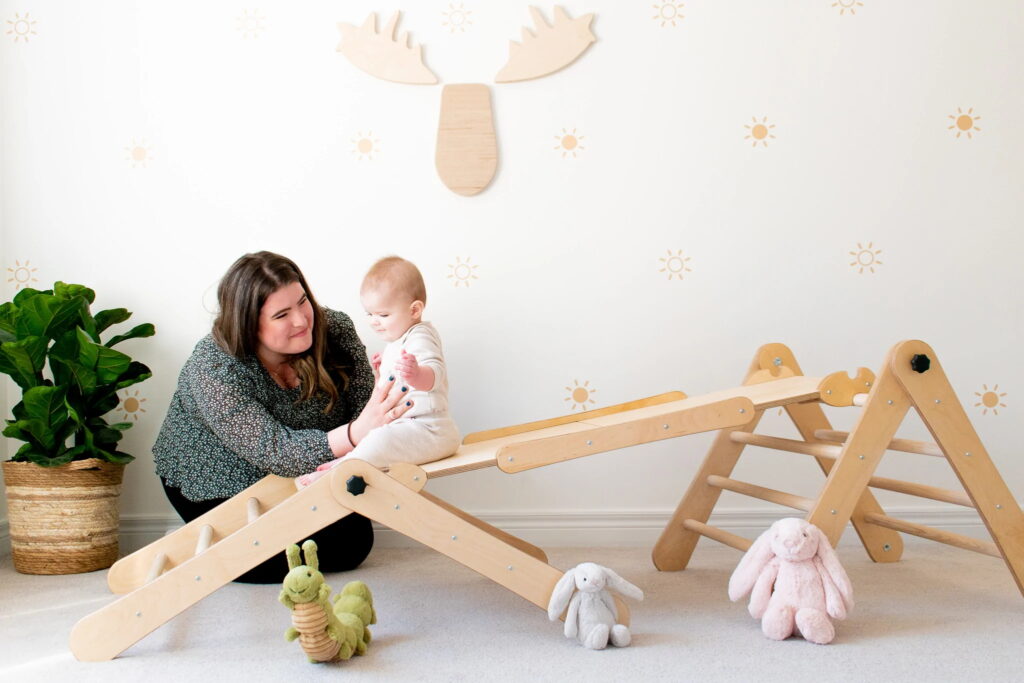
4. The value of providing a stable, consistent, predictable routine. Babies have their own innate drive to develop and given a sound environment, they will flourish without “extra” help.
5. The value of trusting your baby’s own timetable: He can sit up by himself without support when he’s ready to do so; he can walk on his own timetable. When his muscles and bones are ready for these new adventures, he will do them himself. Dr. Pikler would never put a baby into a sitting or walking position until he or she was ready to do it on their own.
6. The value of trusting your baby to solve his or her own problems when possible. If your crawler gets stuck under the table, you can get close, offer support and see if he/she can extricate themselves on their own. The satisfaction on his/her face will be worth it!
7. The value of empathizing when your baby expresses their own distress rather than trying to plug him/her with a pacifier, jostle or distract the child. Babies need a lot of time for free movement and uninterrupted play.
In short, Dr. Pikler reminded us that babies are unique individuals and we should treat them as such!
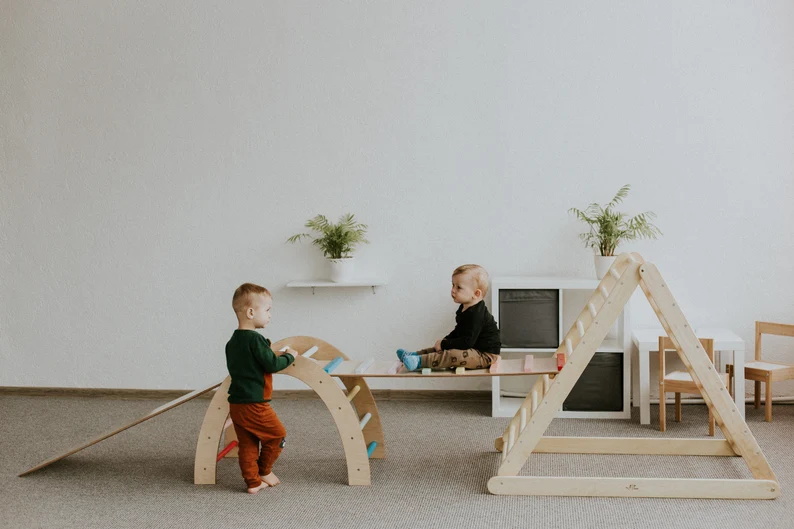
Dr. Pikler’s Advice for new parents:
In her research on gross motor development and pediatric practice, Dr. Emmi Pikler noticed that healthy babies have an inner developmental know-how. Trust this knowledge. Give your baby space and time, on the floor (on a blanket) to move as he or she needs to move, explore as he or she wants. Realize that he/she will turn over, sit up and walk when the time comes. They don’t need help to do this. In fact, putting the baby into a position that she can’t get into herself means putting her in a position her muscles and bones aren’t ready to support. Getting her used to this time alone on the floor, in a safe space, also gives you time to do your own thing. While she’s lying on her back, even at the youngest age, she can be fully absorbed in a ray of sunshine, passing shadows on the wall, people’s movement in and out of her field of vision, her own hands. You don’t need to entertain or “stimulate” your infant.
The thousands of times you will change, dress, bathe and feed your infant are perfect times to slow down, tune in, be with the baby fully, interact, tell them what you’re going to do before you do it and involve her in the doing – even before she can understand your words. “Now I’m going to put on your pants. Can you lift your foot?”
Babies are people but we don’t always remember to treat them as such. If she is on the floor and needs a nappy change, stop for a moment and observe. Is she busy with something? Can you wait a second? If you say, “I need to change your nappy now”, put out your arms, and give her a chance to respond, she will feel respected.
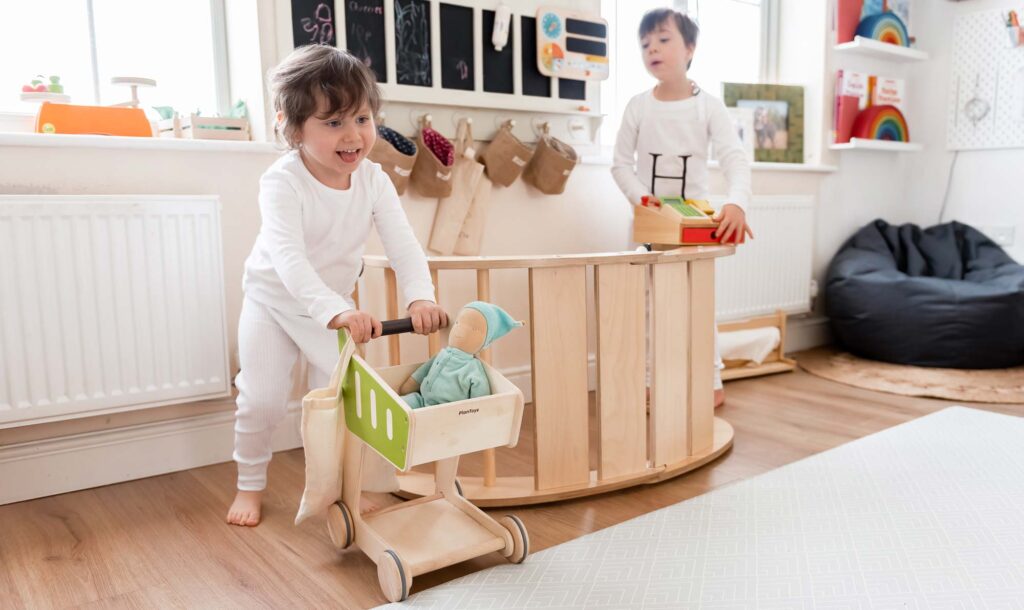
Dr. Emmi Pikler’s 4 principles of Curriculum
1. The value of self-initiated activity of children from their earliest age.
2. The value of building a trusting relationship with a consistent professional caregiver whose attitudes are directed by respect for the child’s personality and understanding of his needs.
3. The value of sustaining each child in building self-awareness. This is done through encouraging active participation in whatever is going on – alone or in interaction – rather than simply perceiving the child as an object to be cleaned and fed.
4. The value of fostering optimal health in the children, reciprocally influenced by the first three points.
Information sourced from Pikler.org
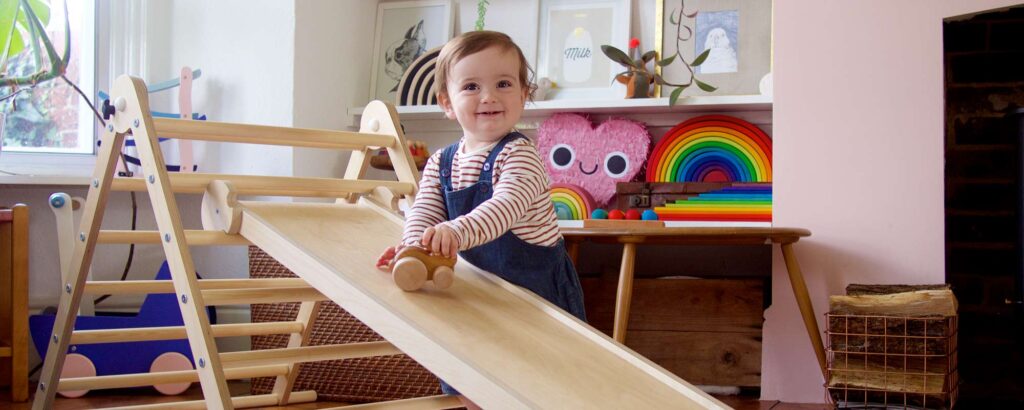
Reggio Emilia Philosophy
The Reggio Emilia Approach is an educational philosophy focused on preschool and primary education. It was developed by Loris Malaguzzi, who was a teacher himself, and the parents of the villages around Reggio Emilia in Italy after World War II. After such a great and destructive event, people believed that children were in need of a new way of learning: the assumption was that people form their own personality during the early years of development and, moreover, that children are endowed with hundreds of languages. The aim of this approach is teaching how to make them useful in everyday life. The program is based on the principles of respect, responsibility, and community through exploration and discovery in a supportive and enriching environment based on the interests of the children through a self-guided curriculum.
The city of Reggio Emilia in Italy is recognized worldwide for its innovative approach to education: the philosophy’s name comes from the city itself. The keyword of this method is foster education, from a tender age, promoting the best possible integration among children’s languages which, as Loris Malaguzzi said, are a hundred or more. In this approach, there is a belief that children have rights and should be given opportunities to develop their potential. Children are believed “knowledge bearers”, so they are encouraged to share their thoughts and ideas about everything they could meet or do during the day.
The Reggio Emilia philosophy is based upon the following set of principles:
· Children must have some control over the direction of their learning;
· Children must be able to learn through experiences of touching, moving, listening, seeing and hearing;
· Children have a relationship with other children and with material items in the world that children must be allowed to explore and
· Children must have endless ways and opportunities to express themselves.
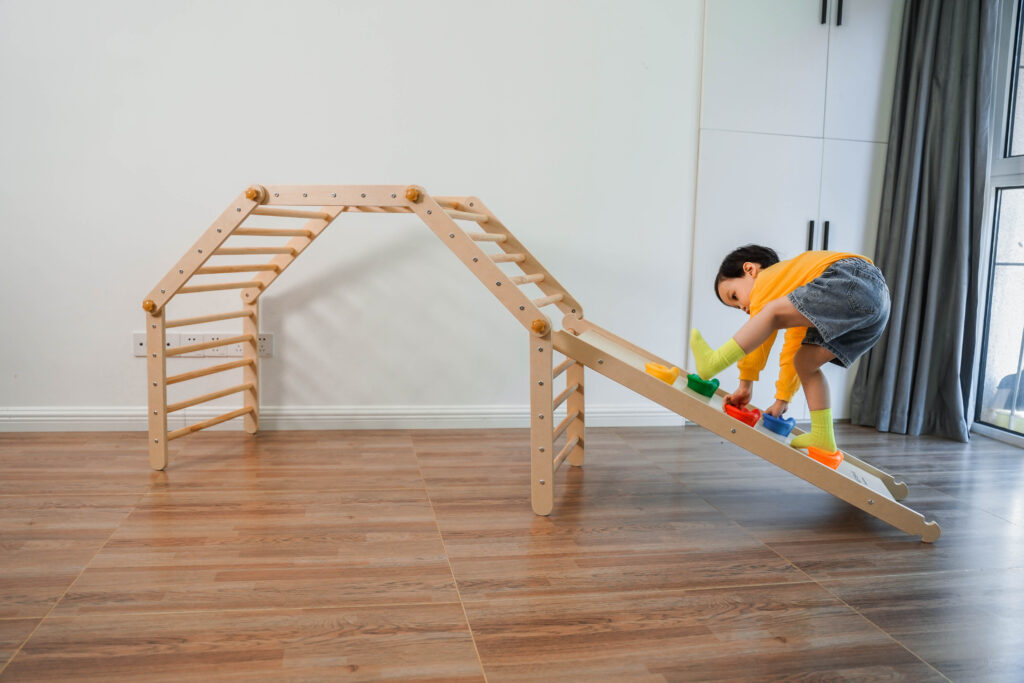
The Reggio Emilia approach to teaching young children puts the natural development of children as well as the close relationships that they share with their environment at the center of its philosophy. The foundation of the Reggio Emilia approach lies in its unique view of the child. In this approach, there is a belief that children have rights and should be given opportunities to develop their potential. “Influenced by this belief, the child is beheld as beautiful, powerful, competent, creative, curious, and full of potential and ambitious desires.” The child is also viewed as being an active constructor of knowledge. Rather than being seen as the target of instruction, children are seen as having the active role of an apprentice. This role also extends to that of a researcher. Much of the instruction at Reggio Emilia schools takes place in the form of projects where they have opportunities to explore, observe, hypothesize, question, and discuss to clarify their understanding. Children are also viewed as social beings and a focus is made on the child in relation to other children, the family, the teachers, and the community rather than on each child in isolation.
Information sourced from Wikipedia

